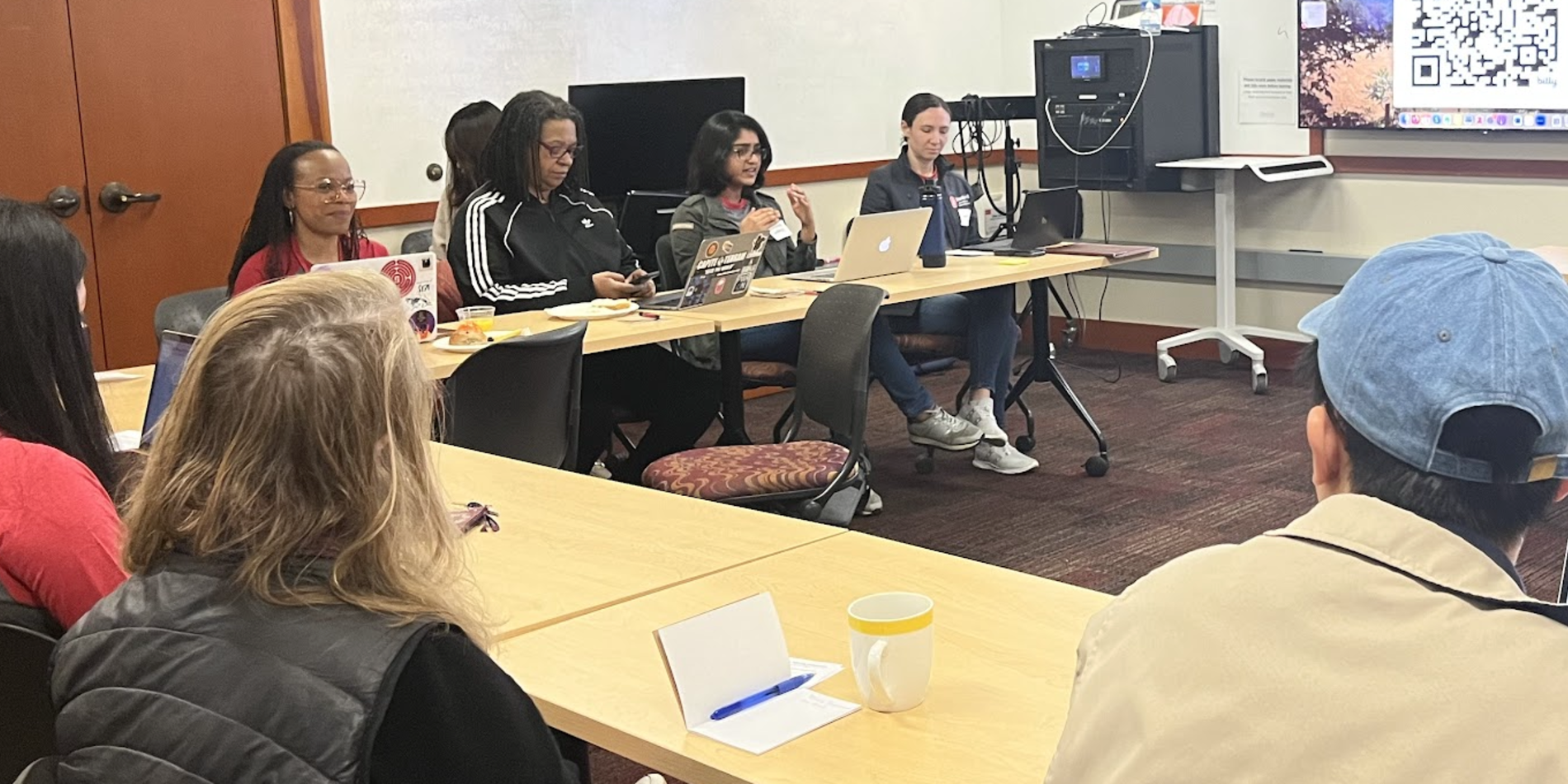Coordinator's Corner: "Class Observation": Two words that can strike terror in the minds and bellies of instructors. Do they have to?
By Donna Hunter
It’s 1:05, still 15 more minutes to go before class ends. I keep wishing there was a clock in the room or a window to distract me. How long can it take for 15 students to choose a horse?
Finally, they’re off. Oh man, but where’s Ocho Ocho Ocho? Frosted is way out in front. Itsaknockout is coming up on the outside. And now American Pharaoh takes the lead, American Pharaoh, American Pharaoh wins it.
Lucky I wasn’t really in the class, since I would probably have wound up as the first presenter on the first day, given that the horse’s finish signaled the order in which students in Rob Stephen’s “Power of Sports” course chose their final presentation order.
I’m not saying that all of us are going to take the time to upload an edited version of the Kentucky Derby sans winners’ names and print out slips with the horse’s name and odds on them, but I have to admit that it did make me think about adding a bit more pizzazz to my presentation scheduling process.
Last year, nine instructors began teaching PWR 2 for the first time, and in addition to getting to help them think about how they wanted to teach that exhilarating sophomore seminar (think PWR 1 with oral presentation), I was lucky enough to sit in on one of each instructor’s classes. And while that may sound like a huge time commitment, and it is (I only teach one instead of two classes as a coordinator), it was one of the best things I got to do all year.
Why? First, no one I visited had any sort of panic attack. In fact, I think we all had fun, or at least no one said otherwise. We scheduled a time in advance and then I just showed up, watched and participated whenever I could. After the class, the instructor and I usually chatted for a few minutes about what I loved most and then I wrote a page or two of observations. I noted what the instructor did, what the students did and any observations I made (thanks John Peterson for the format).
Two, I learned so much. Not just about the activities I got to be a part of, but about how to really enact those activities. I witnessed how these instructors orchestrated the entire class session so that the activities made sense in the context of that particular class and the course itself. Reading the “Activity of the Week” posts are great, but what you’re missing is what led up to that activity, what followed it, what happened the class before, what would happen after, etc.
Now it may seem like I’m writing about class visits so that you’ll say yes to me visiting yours, and while there is a tiny bit of truth in that, my real goal is to inspire you to visit one or more of your colleagues’ classes. Maybe you’re wondering how Selby Schwartz makes counterargument come alive by pairing students up during the drafting phase and having them pose views that complicate the author’s view on the spot. Or maybe you’ve noticed that your students are rooted to one spot as they present and would like to see how and when Kathleen Tarr uses runway walking to Beyonce to help her students choreograph their presentations. Or you might want to experience how John Peterson uses poetry to help students rhetorically analyze their prose.
But maybe you think this all sounds horrific because you associate class visits with nausea and heart palpitations. If that’s the case, you’re not alone. Jonathan Hunt, who’s now teaching at USF, has been researching the emotional experience of class observations (especially evaluative visits conducted by administrators) and discovered, not surprisingly, that many of his interviewees, veteran teachers and new, said they experienced “anxiety, nervousness, fear, and dread” (Hunt, “The Classroom Visit: Attitudes and Practices,” unpublished manuscript). At the same time and less intuitively, many also associated visits with “enthusiasm, delight, and amazement.” He also discovered that the observer was the primary beneficiary of the observations—not the person being observed—because the observer observed more people more often. He therefore concludes that more instructors should “regularly observe and be observed.” So, by trading observations with your colleagues, you both benefit.
And while I haven’t conducted my own interviews, I will strongly attest to the learning that occurred as a result of my visits. For example, I had heard about non-linear outlines, but after experiencing the process in Meg Formato’s class, I tried it out in mine, with good results. And after seeing the engaging slides Maxe Crandall and Trisha Stan were using, I decided to include more in my classes. I also modified the questions I ask students about Boothe essays based on my experience in Raechel Lee’s class and hope to use Canvas in the fall as masterfully as Norah Fahim.
So to sum it all up, class visits are incredible learning opportunities for observers and can be helpful for the observed when they are: “reciprocal, transparent moments of learning” and this learning is made “transparent” (Comer, “Bending the Gaze: Transparency, Reciprocity and Supervisory Class Visits,” Pedagogy, 22.1 [Fall 2011] 533). That is, talk about what you learned with each other and if you have any ideas for making your colleagues’ teaching even better, ask if you can share them.
I know that time is always of the essence, but I guarantee that class visits are time well spent.



